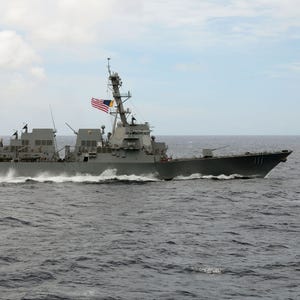Analysts are divided over how China will react if an international court in The Hague rules in favor of the Philippines, calling into question the legitimacy of China's mad-made islands and claim to the South China Sea.
The July 12 decision by the International Tribunal for the Law of the Sea could produce a reaction by China's armed forces beyond what it has already accomplished. The Chinese military has established air bases, radar facilities, air defense facilities, port facilities and land reclamation efforts on rocks, islets and shoals in the South China Sea.
Some analysts fear that China will declare an air identification defense zone (ADIZ) over the South China Sea, as they did over the East China Sea in November 2013. The abrupt announcement caught Japan and the United States unprepared on how to respond. China’s ADIZ covered the disputed islets of the Japanese-administered Senkaku Islands, which China claims as the Diaoyu Islands.
Ching Chang, a naval analyst and research fellow at the Taipei-based Society for Strategic Studies, said that despite propaganda from state-controlled media outlets like China Daily indicating Beijing will take military action, the government itself has never officially threatened to do so.
The People’s Liberation Army has its own tempo and agenda in conducting exercises, construction work and routine patrol missions, Chang said. The arbitration has no bearing on its plans, he said, as the military will not respond to a legal decision. If an ADIZ is declared, it will likely be in reaction to strategic and tactical demands rather than a foreign court's decision. China's Ministry of Foreign Affairs is the sole responder to such a legal decision.
A contractor with US Special Operations Command, Robert Haddick, has a sliding scale of events that could happen following the international court's ruling in favor of the Philippines:
1. China does nothing.
2. China's Ministry of Foreign Affairs issues a strongly worded statement followed by more full-page advertisements like the recent one in the Wall Street Journal that explained China’s position.
3. China’s Coast Guard and related nonmilitary maritime agencies hold a large, visible exercise in the Spratly Islands (current exercises are held near the Hainan island and the Paracel Islands).
4. A large naval exercise takes place in the in the Spratly Islands.
5. J-11 (Su-27) fighter aircraft deploy to new runways in the Spratly Islands.
6. H-6 bomber and J-11 exercises take place over the Spratly Islands that involve at least a regiment.
7. Permanent installations of HQ-9 surface-to-air missiles (SAM) and anti-ship cruise missiles (ASCM) are set up on the Paracel Islands.
8. An ADIZ is declared with a detailed explanation of how it will be enforced.
9. Dredging and island-building takes place at Scarborough Shoal.
10. Permanent installations of HQ-9 SAMs and ASCMs are set up in the Spratly Islands.
11. A naval exercise kicks off in the Spratly Islands that includes live missile shots from ships and the Hainan island.
12. Live-fire tests of DF-21D anti-ship ballistic missiles take place against underway target ships in the Philippine Sea.
Haddick, who wrote “Fire on the Water: China, America, and the Future of the Pacific,” said that if China executed No. 8 or higher, it would indicate that the Chinese leadership has concluded it possesses military escalation dominance in the South China Sea.
“I say this because I have read that the US government has privately warned Beijing that No. 9 and maybe No. 8 would lead to unspecified US responses," he said.
James Holmes, co-author of "Red Star over the Pacific: China's Rise and the Challenge to U.S. Maritime Strategy,” said China is politically and strategically predictable, but tactically unpredictable.
“Beijing has repeatedly gone on the record saying all of this has belonged to China since time immemorial … [and] can hardly back down from such public commitments now, lest it make itself look weak and vacillating," Holmes said.
Holmes, a professor at the U.S. Naval War College and a former US Navy surface warfare officer, said that tactically speaking, China will keep the world guessing, though China does use an incremental approach that has proven itself a winner — what is sometimes called a “nibbling strategy” or “salami slicing” approach.
“Sun Tzu and Mao Zedong do advise that there can never be too much deception in diplomacy and warfare, and China has taken that wisdom to heart,” he said.
“The trend lines are going China's way. Why change? Let the hubbub over the UNCLOS [United Nations Convention on the Law of the Sea] tribunal ruling die down, and then make the next move once the new equilibrium settles in. The incremental approach is a proven winner thus far,” he added.
Holmes said China doubts the US or anyone else will do anything beyond complain, and that China will continue using a maritime militia made up of thousands of fishing vessels and a growing number of Coast Guard vessels, with the naval force in the background, to “softly … win without fighting.”
"This small-stick diplomacy has delivered the goods for four years now — why break with success?" Holmes said.
http://www.defensenews.com/story/defense/international/asia-pacific/2016/07/07/south-china-sea-philippines-islands/86794312/



No comments:
Post a Comment
Note: Only a member of this blog may post a comment.